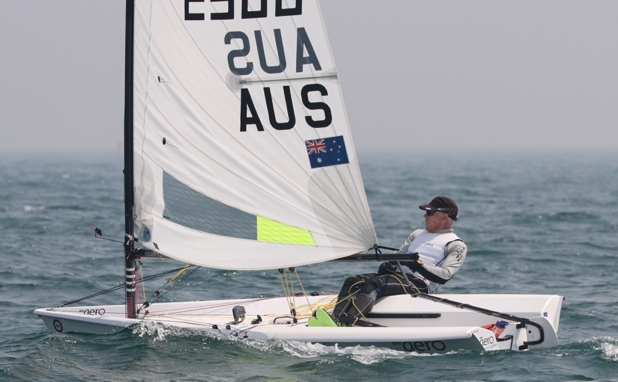
Welcome to the International Class Association website for the RS Aero. Here you will find all there is to know about the RS Aero including the latest news, how to register your boat, and links to relevant documents.
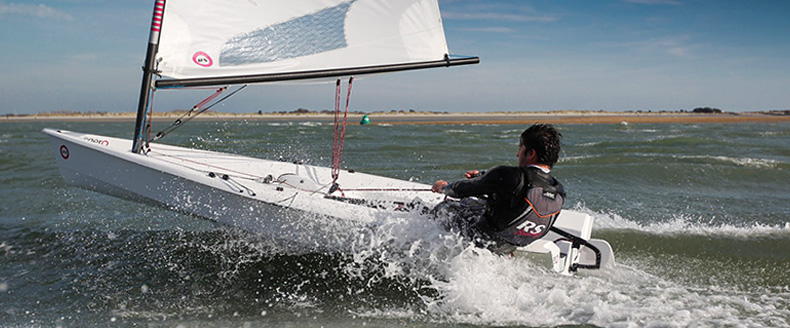
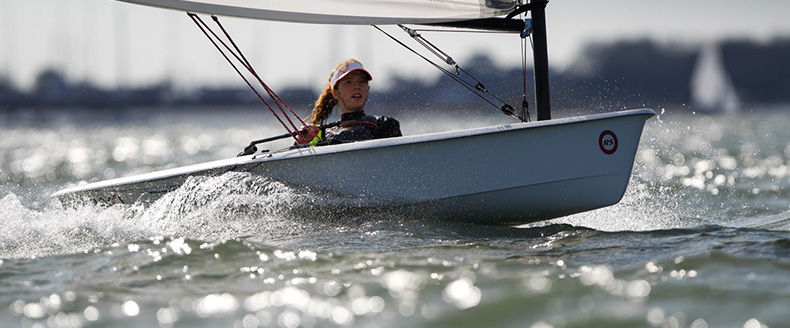
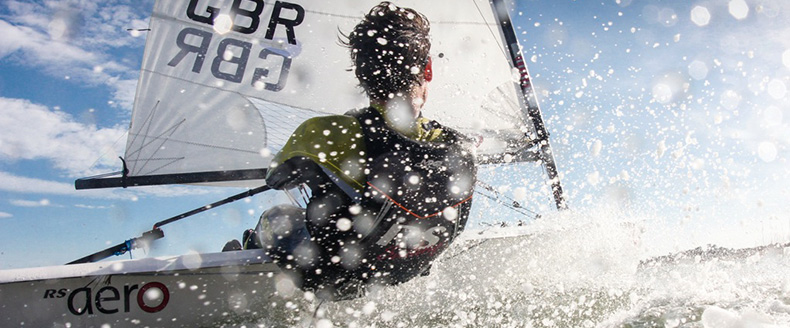
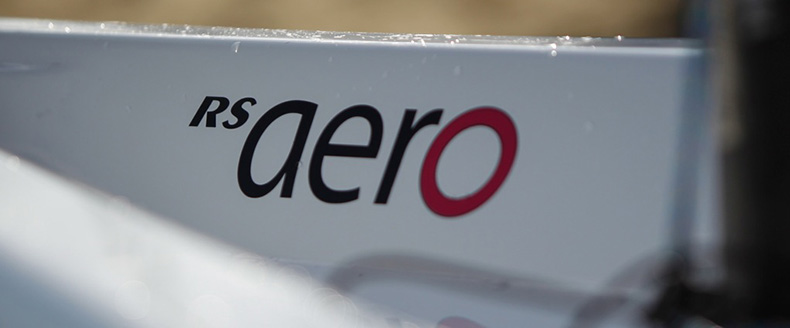
| Home >> Technical >> Kicker effort comments |
Hi Doug,
In the current edition (March 2015) of the class rules it is not legal. However a relaxed attitude has been taken in anticipation of it being legal in the next draft.
That clause you quote refers to 'tails', i.e. outside the system (behind the cleat and not at the gooseneck). It is written with the Cunningham and outhaul in mind as there is no want to tidy the vang tail.
The imminent World Sailing (ISAF) edition of the class rules allows a block max 20mm diameter to be attached using rope to the vang gooseneck block and to lead the vang rope through that block rather than the gooseneck block.
There has already been a small improvement to the vang gooseneck block and there may be another in due course, reducing/eliminating anyones wish to tie on an alternative block.
Personally I am happy to use the original gooseneck block and I usually use the mainsheet to assist in getting the vang tight.
Reply
09/07/2016 20:44:18
Peter Barton
Posts: 4681
So is it class legal to tie a block to the gooseneck pulley? The following from the class rules implies it is...
C.9.2 (d) It is permitted to “re-lead” the tails of the control lines provided
that no further holes are drilled in the hull or rig. All additional
blocks or rings shall be attached by line. The use of adhesive is
not permitted.
that no further holes are drilled in the hull or rig. All additional
blocks or rings shall be attached by line. The use of adhesive is
not permitted.
Reply
09/07/2016 12:04:27
ddubois
Posts: 8
The vang is hard to pull on, and there is definitely friction where boom snags vang as it enters mast internal pulley. Would be great if we could just tie a block to internal pulley "just like" the outhaul block in a laser (sorry for mentioning a swear word). Would eradicate friction and be cheap and effective
Reply
Reply
10/06/2016 19:42:36
Johnrfyc
Posts: 15
24/06/2015 21:21:51
Sandy Goodall
Posts: 30
Brian,
Certainly from an inland perspective on relatively small pond, Pete Townend & I had some great races on sunday in a F4 or so. He was going for speed, I was going for height. Both in 7-rigs, height won over speed on all the beats.
So... to gain height, IMHO you need kicker - and lots of. Having said that I love the system we currently have to control it, but I am a mainsheet in then kicker the slack and add a touch more kind of sailor - as you say, Laser-style.
At Northampton on bigger water, for us anyway, again height won over speed, again with one hell of a tight leech.
Will be interesting to see how the sea-boys do it at Lymington. Will feedback if anything new to report.
Lots to learn but one hell of a piece of kit.
Matt
Reply
04/06/2015 21:48:26
Matt Thursfield
Posts: 33
04/06/2015 13:24:59
Posts: 0
Hi everyone,
From an Aussie point of view and with great respect, but I think you are all over thinking this.
How much vang (kicker) do you really think is necessary?
Reality is, if you are thinking that existing blocks and tackle need to be strengthened, then you are considering far too much vang and I'd hate to see your leech operating upwind.
Need to stop thinking Lasers and start thinking skiff. For that extra degree of height, you will lose heaps in VMG.
Consider the type of line used if your concerned about friction at the boom/ mast connection pulley.
I also believe that the time to review systems would be after a full season of global regattas to see how things played out.
Awesome boats though aren't they.
Cheers.
Reply
Reply
04/06/2015 12:16:18
Brian
Posts: 20
On the test boat that I tried, before buying my own boat, the vang was rigged in such a way as to bypass the sheave under the forward end of the boom, and instead went directly to the block on the deck (as some of you have described doing). After sailing for half an hour in fresh winds, and using plenty of vang, there was a "bang", and the vang went slack, as the deck organizer fitting on the deck broke.
Reply
Reply
04/06/2015 12:03:33
Sandy Goodall
Posts: 30
I agree with MOB with additions. The turning block on the gooseneck is a potential failure point and to refit to lower the block would be costly.
The main issues in the forum seems to be around strength of the anchor point. I rigged up a simple system using a 20mm block and becket on 3mm Dynema that passes through the free slots at the forward end of the deck organisers and wraps once around the mast collet. This way I utilise two anchor points plus the mast to keep the block as low as I can so it doesn't foul the compass mount I made.
This however causes the sheets to rub but would be easily overcome by switching the vang hangers on the boom so that the twin hanger is the aft most and the strop hanger is the forward most.
I don't believe this would contravene the intention of the class rules as anything that makes sailing the Areo easier with less chance of failure of equipment must be a good thing
Andrew
Ps: if I knew how to add photos to my post I could show you
Reply
Reply
04/06/2015 11:39:18
Tijuana Taxi
Posts: 19
Hi MOB
Thanks for the info. Can you please email me [email protected] with a photo of your kicker rigged and under some tension.
Best regards
Jnr
Reply
04/06/2015 08:58:54
Posts: 0
In an earlier post I described threading a light line around the sheave and tying a ball bearing block to it. Here is a pic of what I suggest. It works well, and I think keeps the line of force angles pretty much the same. It does not interfere with the boom, and greatly reduces the friction. Of course this is a jury rig, and could be much more elegantly done. I have been letting my fellows demo my boat, and the only negative comments made are in regard to the force required to adjust the vang. 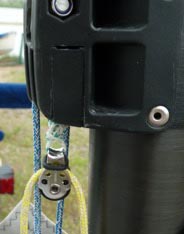

Reply
03/06/2015 16:25:32
neilray
Posts: 19
Jnr,
Thanks for the clarification. Appreciate having the attentive ear of post-sales. Thanks.
As feedback: the current route of the kicker line rubs the bottom of the boom and incurs a high level of friction. By way of testing, I bypassed this friction point and the kicker is MUCH easier to use, but as you point out, it is not optimal for all the reasons posted above.
I would recommend that in the future, the turning block in the boom for the kicker be redesigned to be lower so it does not rub the bottom of the boom.
Interestingly I noticed in earlier photos of the boat, that the current integrated block for the kicker and outhaul was not present. The current design is much cleaner, but could still be improved in future versions of the fitting.
Reply
02/06/2015 17:21:56
mob
Posts: 38
Hi All
Jim Hood aka Junior from RS Aftersales here.
The formal line from RS is the boat is to be rigged as per the current Rigging Guide as supplied with the new boat or available on the RS website. Deviation from this may invalidate the Warranty.
RS will of course listen to feedback and take action if required. In addition the class always has the ability to act collectively and make changes by voting them through.
Jnr RS Aftersales
Reply
02/06/2015 16:39:56
Posts: 0
I don't have a problem with the normal set up, it works well enough and I use plenty of kicker and sail on the sea. If you go off the boom, the angles will vary side to side, because the blocks are asymmetric- also the stress on the deck block fitting will be much higher.
Reply
Reply
31/05/2015 23:12:08
Posts: 0
I also went through a period of missing out the gooseneck kicker pulley, by mistake, & noticed the extra effort required when the kicker tail is threaded through it.
My impression is that the added effort is not so much from the pulley as from the tight bend of the kicker tail.
That said my style of sailing has moved on, in that I don't use as much kicker, and ease it off much less going downwind.
Reply
28/05/2015 12:53:34
Jonathan Rickels
Posts: 104
Just tested it out bypassing the boom turning block. Much, MUCH better. Loads are significantly reduced and I can now trim the vang appropriately from the rail without having to pre-trim the main.
Reply
Reply
28/05/2015 00:19:48
mob
Posts: 38
Hi,
It's done that way to distribute loads and reduce rope on rope friction as the pulleys are so small. It's a good system and doesn't need to be changed.
If you're really worried about this then I might suggest you are considering way too much vang which will reduce performance.
This hull and rig has many skiff like characteristics, if you over do the vang you risk choking things up.
To me, once it's on as hard as I can in breezes over 14 knots then that's enough.
Cheers.
Reply
Reply
27/05/2015 23:04:31
Brian
Posts: 20
First key question is if it is legal to miss out the gooseneck sheave for the kicker? Second question - RS please answer - why was it done that way.
It always surprised me but I'm guessing they had a good reason. I can see that it does centre the pull - the lower pulley isn't central and the boom trick keeps things more unchanged as the boom eases. Maybe we just need to grease the pulleys in the gooseneck...
Reply
27/05/2015 16:59:48
Gareth
Posts: 170
Perhaps threading a light dyneema line around the sheave and attaching a small ball bearing block to it just below the boom attachment casting would be a solution. The angles would remain relative to the original rigging. It seems that the sheave rotates on a simple axle. Introducing ball bearings into the equation will lead to better reliability as the kicker gets a lot of use.
The problem to anticipate with this is it could peel the boom away from the detent that holds it in place close to the mast.
Reply
27/05/2015 16:48:12
neilray
Posts: 19
Thanks for that - Await your experiment with interest - Also I wonder about class rules - Peter?
I am always looking for tweaks to make life simpler and easier and the younger sailors do find it hard to power up the kicker to the max
Reply
27/05/2015 08:35:11
haimark
Posts: 41
I would hope there is a backing plate behind the deck surface.
Yes you are right the angle will be different and there will be more torsion.
But with the current friction when rigged "correctly". I'm going to try bypassing the boom sheave. I'll let everyone know if it pulls the block off the deck!
Reply
27/05/2015 08:08:09
mob
Posts: 38
OK ...I guess I should modify my question - The load on that deck block will be angled to more sheer on its fixings and support rather than traction as it is stock - would this place a distorting load on the thin deck or a sheer load on the actual fixings and cause damage. Bearing in mind that the gel coat and deck structure is very thin
Reply
Reply
27/05/2015 07:56:01
haimark
Posts: 41
The load could be less. When you pull extra hard on the vang, the friction at the boom would increase the load on the deck block. On my boat, it is almost acting like a ratchet. Hard to pull on and easy to hold once tensioned.
For comparison, a Laser vang is much easier to to pull on (less force required)
Reply
26/05/2015 22:28:13
mob
Posts: 38
26/05/2015 22:20:00
haimark
Posts: 41
I've found the line rubs against the lower part of the boom and the friction at that point through the boom is very high too.
I'll try your suggestion ... thank you.
Reply
26/05/2015 16:49:58
mob
Posts: 38
some have remarked that it is difficult to get the kicker to full on tension without close hauling the mainsheet I rigged up and mistakingly skipped the sheave on the mast where the boom attaches. The improvement and reduction of effort was remarkable. Comments?
Reply
Reply
26/05/2015 16:47:24
neilray
Posts: 19






